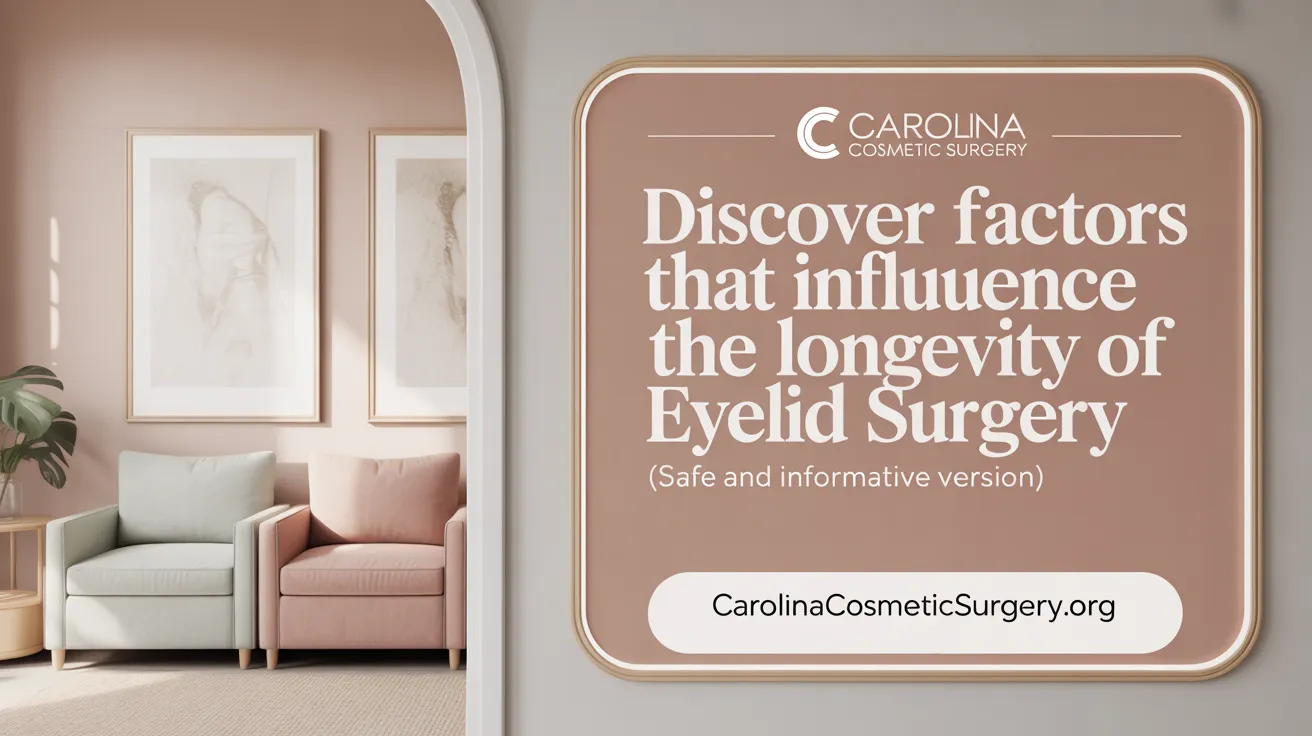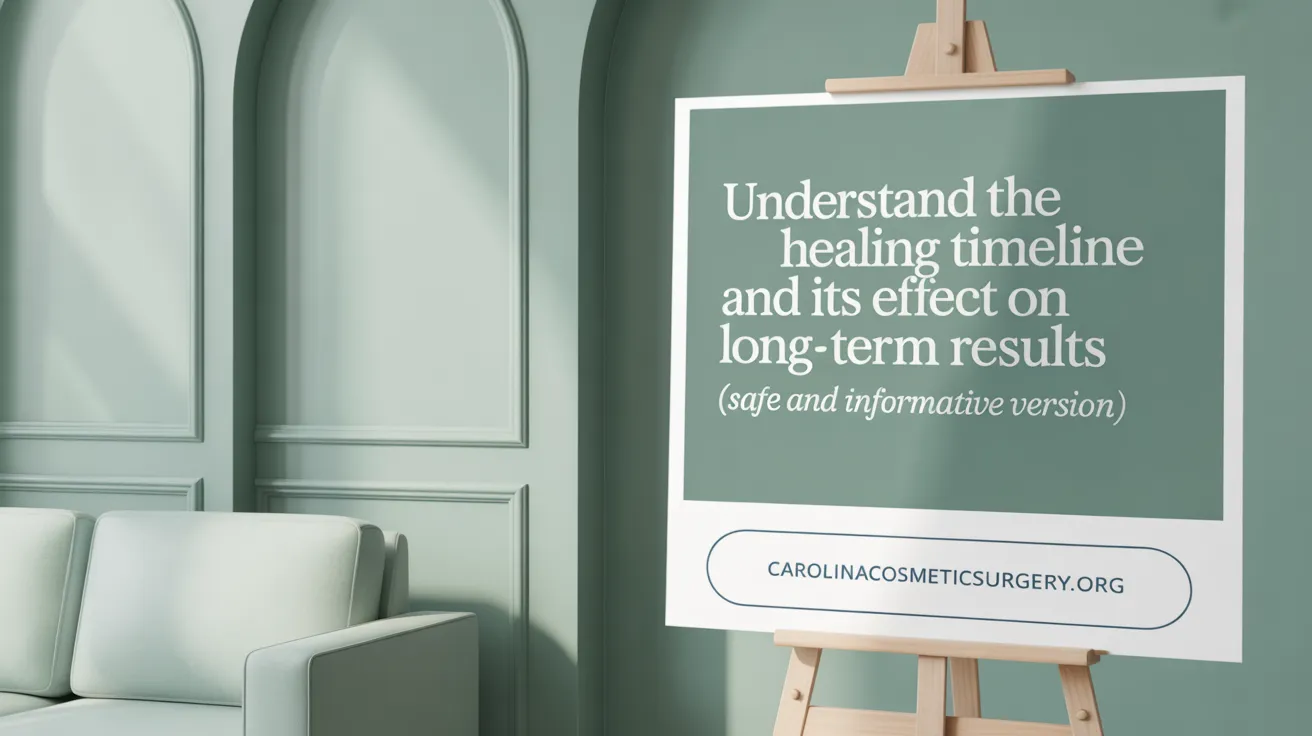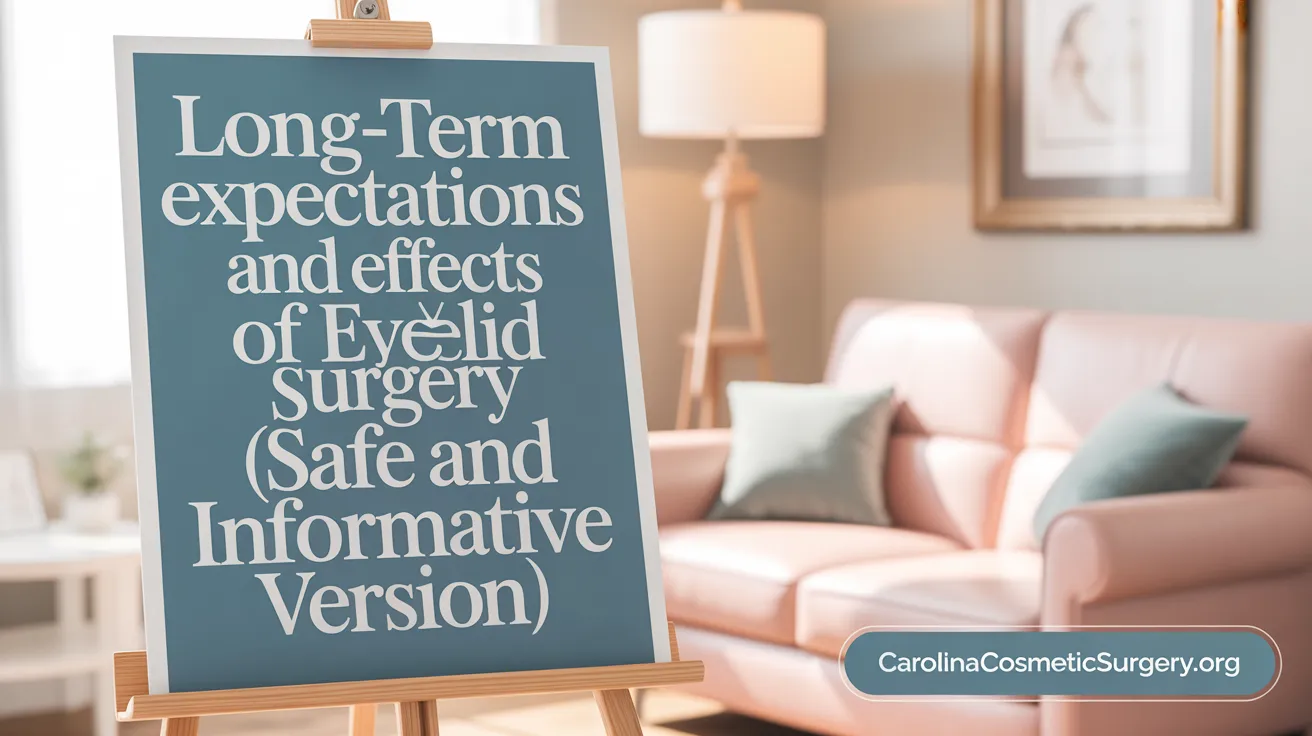Setting Expectations for Eyelid Surgery Duration
Eyelid surgery, or blepharoplasty, is a popular cosmetic procedure aimed at rejuvenating the appearance of the eyes by removing excess skin and fat. Patients often wonder how long these surgical results last and what factors influence their durability. This article explores typical result durations, healing processes, and maintenance tips to help individuals understand what to expect and how to prolong the benefits of their eyelid surgery.
<!-- VIDEO:eyJsaW5rIjoiaHR0cHM6Ly93d3cueW91dHViZS5jb20vd2F0Y2g/dj1DaVZkUTl5Qk5xOCIsImltYWdlVXJsIjoiZGF0YTppbWFnZS9qcGVnO2Jhc2U2NCwvOWovNEFBUVNrWkpSZ0FCQVFBQUFRQUJBQUQvMndDRUFBa0dCd2dIQmdrSUJ3Z0tDZ2tMRFJZUERRd01EUnNVRlJBV0lCMGlJaUFkSHg4a0tEUXNKQ1l4Sng4ZkxUMHRNVFUzT2pvNkl5cy9SRDg0UXpRNU9qY0JDZ29LRFF3TkdnOFBHamNsSHlVM056YzNOemMzTnpjM056YzNOemMzTnpjM056YzNOemMzTnpjM056YzNOemMzTnpjM056YzNOemMzTnpjM056YzNOLy9BQUJFSUFGTUFsQU1CSWdBQ0VRRURFUUgveEFBY0FBQUJCUUVCQVFBQUFBQUFBQUFBQUFBR0FBTUVCUWNDQVFqL3hBQkhFQUFDQVFNQkJBVUtBZ1lHQ3dFQUFBQUJBZ01BQkJFRkJoSWhNU0pCVVdGeUJ4TVVJekl6Y1pHeHdZR3lKRFJDWXFIUkZVUlVZL0R4SlNaRFUyUnpncEtUb3VFSS84UUFHQUVBQXdFQkFBQUFBQUFBQUFBQUFBQUFBZ01FQVFEL3hBQWhFUUFDQWdJQ0FnTUJBQUFBQUFBQUFBQUFBUUlSSVRFRFFSSXlJbEZoUXYvYUFBd0RBUUFDRVFNUkFEOEFQNGw5VW5oRmU3bE94cjZ0ZkNLZW5hR0JVRFJGeXloczcrT2VmNVVOQnRrSXJYQldubU9XSlZWVUVjQm5PSzVraVBvelM3NEdIQStZUDhxNmpyR053R3VTdGRNeFdFTnc0bkJKK0ZDVzBtMkVXbHNZTFlDZTRIUHBZVmZqMjBMYVd3a213b0sxeVZyT0xieWhYOGwyVGN4UXlJZWF4Z3BqNGM2SmRFMnQwL1VyZ1dyTWJlNVBzeHlIMnU0R2c4a3d2QmhCdVY0VnA0RE5JclJIREtnSXdic09hRU5qTG8zUGxGMXhMcUNMRnphb1N1QVJ3UFYyYzZNWnhpSi9DYUJOanpqeWxYdmZacDlxR1MrTE8vcEJacXQ1SHN2cVZ2QTdkQ1VscmR1dFNQMmUvblU5TnRwMkhHV01FZnVpaHZ5eFJDYSswRUVjNUgvTFFGRmNFVHZiU1NsWFRIU0k1ZzB1S2RZRGxWNU5mazIwbkEvV1VHT3hSVGNtM0xqK3NaK0dLeTBoQVNHdUd5T3dWeVJibjJyaDYybjltWStqUnp0VStzWEsyanN6SXF0THo0WlVaRlBYZnJMcVYrdG5Kb0QyWkVhNnVXaGtMRDBhWUhQaHJRSkY2WlBmWFZUTkt1N1hFZytGZTA3ZUw2d2VHdmFJRUxvdmRKNFJYT3BLTjZKaWhMQ05jRWZFMTNEN3BQQ0s5dm1UMVc4d0hRWDZtcUJQYUIvMEc3OU5lY1R5R052MkRqQXE2VUgranBGZENmV0x6K0RWeTgwYUpsU3A2T2VmWG11MW1EV00zRUhFcWpJK0RWaVJ6S1hhTzdPbjdNM1Z3Z0crR0FUUEhCd1Jtc1B1bmtteG5Ka2x3U2M5WjVmYXRhOG9WMHNXekhtczlLV1hnUGdCeCtaRlprcWowaU1nY054V0g0Y1B0VS9JOGxIR3NHaTdOYktXT24yTWZuWXQ2ZGdDNWJpYTcyazJRc3IrMWFXMGpFVjRnM2tLOE1rVXhEcmJ0TmFxMTVndmpFY1VZS251SlA4QThxNzFpNlJMS0dWM2xUSjVSdnVrNEhiVXZ5dXlweFZVUk5qTlVlLzBzUjNUWnViZHZOU1o1bkhXYUlNVUFiS1hzUzdVYWlzSWxTS2RzaFpmYXpnRTUvSE5hQ295b05XUWRva2txWXhjRDFFbmhOQUd5eEE4cFY2Ui9aRSsxYURjajlIazhKK2xaMXMyZDN5ajNtUDdHdjJyWmVyQVhzZ2k4cHJJMm83UGhseVRPNDUvdTBHMnNkbmM2aHFVVThmSGZpalZnZUk2UkZFL2xGazN0WDJjR2Y4QWJ2OEFsb09RK2IxeTh4d3pQR1QvQU9RMGxhR3ZZWDZSTG9WbHFsMXAyc2FURzhjVWpLdDI4cmRYSVlIYlhPbzdTYk5XbDNMRmE3S1FYRUtIQ3plZllCKy9GUjlUaDg3ZTNjbVBhbmMvK3hvTXZ0Uk1keEpGNXBUdXNSbWlpMmErTk1OZE8xVFRiKzVhYXowZUt4eWpydUs1UEpEeC9ITkZzbzZSK05acHNwY0dZbHlvWGhJTUR3MXBrbnRHdG9IOElGNFBXRHcwcTd1L2VMNGZ2U3JUQW9pOTBuaEZlM2FpVXhqQXp1S1A0bXVJVDZwUENLWnVXa2VYMU1qTHVBQmhqcjQ4cW9FSFlpajNjNEdLY2J6UzJraThQZUxuNUdvNWptV1BwU2tBYzhnZnlxTmNTcXNiS1pzczdBazhPR005VmNkdGdYNVNaTnkxakk1QmVIWUIxbjh0QWRvMklrTDhTR0k0L0gvT2pmYnFYMGhyTk1IY1hKS2tlMGNjQmo4YUMzZ1piY0x6QWJCYnRPZUordFNTYXRsVVU2TkkyZjArd2ZTclc2OHlwZFJuaU9JYmxWOGpvOFVtNm0vdURlQ2xUMWRuZlF6czdOSkxwQlMyWlVtR0hRdXVWQkk2eGtkZFcybnc2bGN6eHI1NW9la0drZmN4d0J5VlU1NDU1Wnh5elUxWHNwNktmWGtSTnQwa3RnQURhd3UyT3NsbTUvZ0JSbENjeGdqbFFGYjNpWCsxT29Ub1EwVVQrWlRzNkhSSDhWSi9HanlFYnNZWHVxcmg3Sk9VNXV2MWVYd0g2Vm0raEhIbEV2ai9BTUluMnJSN3I5Vmw4QitsWm5vY2l0dDlmT3AvcXFqNlUyWHF4UzlrVyszamIycTdQOTF5MzVhRDNrUDlMM3hPUmlkUHowVGJieWdhbm9UY3lzekhIL1RRcEsyZFF2VzVGbmpiSHhiTkxqb1kza01UTHZDUTlzci9BSmpRQnFxT2IrY2hUN3c5VkY2VGVyZi9BSmovQUpqVmZkU2pqd0h5b0k0WTN5bzQyU0JTUHBBalBuTVpIN3RhcEo3UnJNTkZmTTdmRS9TdFBmMmpUZWhWNUlWNTd4ZkQ5NlZLNzk0UERTcmpMTDZHNGo4MG5TSHNqNlUzZDNvaGpmb2dBam9zV0F6V0czWGxBMTJaZDJPWlloakEzRkFxbHU5ZTFhL09icS9tY0FZR1dPQUtmWWxtL3RxbnBSWll5cjRPU3FTQTQ0WXBvMjl4Y3VXampJR1Jrc2VIWFZGNUg5bHI2TFRHMVRWR2VPM3VqdlF3bjJwRnh3WnV3SHFGYVBOR0ZaQW9VUkhvN29IS2hrOEJSV1RIdG9KV3UzWjhjUTVVZDNjTytxNmVPUDBlRlFlQVV0bjRjL3F2eU5TTmN5bDFkb3VWVVNFRGhram5uRlFsSmYxYllER0U0VWZzb09JejNrNU5RdlpYMFcyeDF5KzdLSTNYZHp5YnFGY2JVZVVHODB4SmJIVHJkRm1kQ3ZwTE54VHZDNDU5aHpWVG9FclIzRW02MkVhUWo4TTBPN1Vscmk5YWNIZ1dQRHM3S1pDSzhqSnQrR0FrMkkzbGkzQjdPUjBqMThmODYxeUJ0NkZDZWVCV0w3TDZqSGJJMFVod01LUWV6L0dLMlMzOUhOcEc5cE9rcWJxNUNzRHU1SERPTzNCK1ZGQi9Ob1hMMVI3ZUg5Rmw4QitsWlRzdTMrdVY4ZjdnZmF0UnUyL1JadkFmcFdTN0dNVHRQZkU4L05mY1UyWHF4ZmFMZmJSLzlLYUtQN3h6L0NoeVRqZTNmSC9kbWlUYXUzbG0xRFRKVXdWaVp5L2R3cW85RmxlWjIzT2VQeHhTazFRYlZzZk54d1lLMkYzaWZtYWlUdUc1eVZZZWl1cThVcGlXMVlIM2ZQbHdyRlFlVHpSUUZuVWh0N0xHdFRjOFRXWjZaYnlDNDlrQUlNL01nVnBEdHhOTTZBckpHdkQ2d2VHdktidkc5WXZocjJ1TU1GSUZYMndPempiVDdUMm1ubGYwWUh6dDAzWkV2UDU4Ri9HcUxGYTkvd0RuMnlLalc5UlljUFZXNnQ4MmI2clRrS05mNkNSN3FxRlJSZ0tPUUZSNXh6SGR2QTArVGtHbVZmSWREN1MvU2hhQ1JnK3RYOEw2aGRDR1NTVDF4YmN4azQ3UG5tb0FlU1JielVDcFZZNENBU3VNc1JpcG1wQ0dFU0ZZVnRyK0tSaExJdU1Tb1NTcFBmZzg2cXRTbksyS3dCeVdZWks1NWZIK1ZTTlp3VVhnOTBpNU1hc3B4Z0hlemp0cUxxU3BKZFNSbGVMWU9SMmRacFFlY1dMejhYRWpBWlNPZFNicUkraGk2VVlhUGd3NTRCcHNVbWdKU2FkZEVXT1AwVnNrWlRBVjhkV2VSclIvSnpxcXZGTHA4clJCWFVqT0FNWUdWSlBMbUQvM1VBV2N5bU1SemJvTWczR01uTHU0L2VwK2d3UTJseU45aUNYeWpMejVjdmtlTkxlSFlWWGcxUzZ6Nk5Md09kdzFsR3lhdGFiUlhyeVpXTXhrYitPdlBJZDlhUmVhbkJCdnhQSGNwMFJnU0xoc0ZRUm52d1JRVkNucm5PN3VnazhLYTVZRnBaVEpkN2Nla1NBNE80UFpGY1c0d1dhdlh3UHdyMkhKT2VvVXFodGtpTWVkQmI3VW54d083OEtkaEI4MlNvOXFuV2l6Z1lORFFSQ2hiMXl3Z1lNem91Y2N1a0Q5cU1IWTVPYUdyWlJEcUVMUGpDdURuc3ErTnhFeDk3RVQ0aFRZNkZ2WXhlTjZ3ZUdsWEYzS2hrR0dUMmVvMHFNQXhCYStnUEl2R2tld2Nib29EU1hVek9lMGc0K2dGS2xUaFljZGRSb09KWno3V1N1ZTdOS2xRczQrZHRWa1kzTitUakp1RzQ0N3pWZE16QzJYajdSR2FWS2tkajNvc2RHNDd3UExuVmxNbzlkSGpvTU9rTzJsU3JlUHNEazZLVXF2bzBBd01Obk5XZW5JdUpCamhHb0tmdW4vQUFhVktsdlFZVjZvN1NQQ1hKSjlIaTRud0NxdUwzaHBVcUpuTFJJVUE3eEk1Q20yT0loaWxTb1FpeHRQWVg0Q3BEazU1MHFWQUVRNVAxazFFblZRM0FkZGUwcWFnR1Fwd044ZkNsU3BVWUovLzlrPSIsInRpdGxlIjoiSG93IExvbmcgRG9lcyBCbGVwaGFyb3BsYXN0eSBMYXN0PyB8IERyLiBBbmdlbGEgU3R1cm0iLCJzbmlwcGV0IjoiVGhlIGdyZWF0IHRoaW5nIGFib3V0IGl0IGJlaW5nIGdlbmV0aWMgdmVyc3VzIGl0IGp1c3QgYmVpbmcgYW4gYWdpbmcgdGhpbmcsIGlzIHRoYXQgb25jZSB3ZSBmaXggaXQsIHRoZSByZXN1bHRzIHVzdWFsbHkgbGFzdCBhIHZlcnkgbG9uZyB0aW1lLiJ9 -->Duration of Upper and Lower Eyelid Surgery Results

How long does upper blepharoplasty last?
Upper eyelid surgery, or blepharoplasty, generally provides results that last between 5 to 10 years. In some cases, these results can last a lifetime. However, the exact duration varies depending on several individual factors.
Several elements influence how long the results remain visible. These include skin quality, genetics, natural aging processes, lifestyle choices, and adherence to post-operative care instructions. As the body ages, the skin may begin to sag again due to gravity and loss of elasticity.
The improvements are often long-lasting because the tissue removed during surgery does not grow back or regenerate. Nonetheless, since aging continues, a patient might see some sagging or fat deposits reappear over time.
Proper skin care, sun protection, and maintaining a healthy lifestyle can help prolong the benefits. In some cases, a brow lift may be recommended if sagging of the forehead or brow contributes to eyelid drooping.
In summary, while upper blepharoplasty results are durable, they are subject to the natural aging process. Many patients experience significant aesthetic benefits for about a decade, with some enjoying longer-lasting effects depending on their individual circumstances.
Is the outcome of lower eyelid surgery permanent?
Lower eyelid surgery, or lower blepharoplasty, tends to have more permanent results. The fat that is removed during the procedure does not regenerate, which means the structural changes can last indefinitely.
In most cases, results from lower eyelid surgery are considered effectively permanent, with many patients not requiring repeat procedures. The soft tissues and skin around the lower eyelids tend to age more slowly compared to the upper eyelids.
However, aging processes such as skin laxity, muscle weakening, and gravity can still influence the appearance over time. These effects may lead to some sagging or fat buildup even after surgery.
Because the surgical results last longer, most patients enjoy a refreshed look for many years, often up to 10 or more. Regular skin care, sun protection, and a healthy lifestyle can help maintain the youthful appearance.
What factors cause variations in the duration of eyelid surgery effects?
The longevity of eyelid surgery outcomes varies widely among patients. Factors influencing how long the results stay include:
| Factor | Impact on Results | Explanation |
|---|---|---|
| Skin quality | Better skin maintains results longer | Elastic, healthy skin ages more slowly |
| Genetics | Determines natural aging speed | Some individuals age more slowly or quickly |
| Lifestyle | Affects skin health and aging | Smoking, nutrition, and exercise habits play roles |
| Sun exposure | Accelerates skin aging | UV rays cause skin damage and loss of elasticity |
| Post-surgical care | Helps preserve results | Sun protection, follow-up treatments, avoiding smoking |
| Natural aging processes | Continuous changes in eyelid appearance | Skin thinning and gravity gradually affect eyelids |
How does aging affect eyelid appearance over time?
Although eyelid surgery offers significant and lasting improvements, the natural aging process continues. Over the years, signs such as wrinkles, sagging eyebrows, and fat deposits can reemerge.
Dynamic factors like facial expressions and skin elasticity influence how soon aging signs become noticeable again. Nonetheless, surgical results can provide a youthful appearance for many years.
Patients are advised to pursue regular skincare, sun protection, and healthy habits to extend their aesthetic benefits. When aging signs become more prominent, secondary procedures or nonsurgical treatments may help restore a fresh look.
In essence, eyelid surgery delivers durable results, but it does not stop the aging process. A combination of good aftercare and lifestyle choices can maximize how long the initial improvements are maintained.
Key Factors Influencing the Longevity of Eyelid Surgery

What factors affect the longevity of eyelid surgery results?
The duration of eyelid surgery effects depends on a combination of personal and procedural factors. Primarily, the patient's age at the time of surgery plays a role, as younger individuals generally experience longer-lasting results due to better skin elasticity.
Skin quality is another major factor. Skin that is firm and elastic tends to age more slowly, helping maintain a youthful appearance longer. Conversely, poor skin condition, combined with genetic predispositions that favor sagging or aging, can shorten the lifespan of surgical benefits.
Lifestyle choices significantly impact outcomes. Excessive sun exposure accelerates skin aging, promoting wrinkles and sagging. Smoking damages skin collagen and elastin, further hastening the aging process around the eyes.
Post-operative care and consistent follow-up are also crucial. Using sun protection, avoiding smoking, following your surgeon’s instructions, and maintaining a healthy diet all support the longevity of results.
The specific method and extent of the blepharoplasty performed, including whether excess skin, fat, or muscle was removed, influence how long outcomes will last. Proper surgical technique minimizes the chance of early recurrence.
In summary, while upper eyelid surgery typically lasts about 7-10 years, and lower eyelid procedures can extend over a decade, individual factors like aging, skin health, lifestyle habits, and care post-surgery significantly determine the longevity of the results.
Long-term results and considerations
Even with optimal care, natural aging continues. Factors such as gravity, loss of skin elasticity, and changes in facial tissues mean that eyelids may sag again over time. For some, a brow lift or additional procedures might be necessary to maintain a youthful appearance.
By understanding these influences, patients can take proactive steps to preserve their surgical results and enjoy a refreshed look for as long as possible.
Healing Timeline and Its Impact on Results Durability

What is the typical healing timeline after eyelid surgery, and how does it impact the durability of results?
The healing process after eyelid surgery, or blepharoplasty, varies among individuals but generally follows a predictable course. In the first few days, patients experience swelling, bruising, and mild discomfort. Swelling usually peaks around days 3 or 4 post-op and then begins to decrease gradually.
By the second week, most of the swelling and bruising have subsided significantly, providing a clearer view of the surgical results. During this period, patients often see noticeable improvements in the appearance of their eyelids.
Full recovery, including the smoothing of scars and final skin adjustments, typically occurs within 4 to 6 weeks. However, final results might take several months to become fully apparent, especially as subtle changes continue and scars fade.
The longevity of eyelid surgery results depends largely on the type of procedure and individual factors. Upper eyelid surgeries generally last between 5 to 7 years because skin tends to sag again over time due to aging and gravity. Conversely, lower eyelid procedures often have more lasting effects, sometimes considered permanent, because they involve removal of fat that does not regenerate.
Aging processes such as declining skin elasticity, gravity, sun exposure, and lifestyle choices influence how long the results last. Over the years, these factors can cause some sagging or fat accumulation to reappear, particularly in the upper eyelids.
To maintain results longer, patients are advised to adhere to proper postoperative care, including skin protection, avoiding smoking and sun exposure, and maintaining a healthy lifestyle. Follow-up treatments and nonsurgical options can also help address new aging concerns as they arise.
In summary, while eyelid surgery provides long-lasting improvements, the natural aging process continues to influence eyelid appearance, making ongoing care and adjustments important for sustained aesthetic benefits.
Long-Term Effects and Expectations After Blepharoplasty

What should be expected regarding the duration and long-term effects of blepharoplasty?
The longevity of eyelid surgery results varies depending on the type of procedure and individual factors. Typically, upper eyelid blepharoplasty results last between 5 to 7 years, but some individuals experience longer-lasting effects, potentially up to a lifetime. In contrast, lower eyelid surgery often provides results that last around a decade or more, with many patients enjoying permanent improvements due to the removal of fat deposits that do not regenerate.
While initial improvements are noticeable within the first week, final results usually fully develop by six months post-surgery. Over time, natural aging processes such as skin elasticity loss and gravity can cause eyelids to sag again. For upper eyelids, signs of aging may begin to reappear after about 7 to 10 years, possibly warranting additional procedures like a brow lift. Conversely, lower eyelid results tend to last longer since fat removal prevents re-fatting, although aging can still cause changes.
Typical side effects and their duration
Postoperative side effects are generally temporary. Swelling, bruising, and dryness often resolve within days to a few weeks. Most patients find that swelling decreases significantly by the second week, with full healing completing around six months. Dry eyes may persist longer in some cases, but serious complications such as lagophthalmos or vision changes are rare.
Scarring and long-term changes in eyelid shape
Scar visibility diminishes over time, with scars becoming less apparent within six months and the skin appearing smoother. The procedure removes excess tissue and fat permanently, helping maintain aesthetic improvements. However, slight re-sagging or skin laxity could develop as part of the natural aging process, especially if post-care instructions, such as sun protection and skin health maintenance, are not followed.
Potential for lasting complications
Long-term risks include residual asymmetry, dry eyes, or changes in eyelid position. Serious issues like eyelid lag or vision disturbance are rare. Proper surgical techniques and postoperative care significantly reduce these risks. In some cases, patients might need future treatments, such as skin tightening procedures or brow lifts, to maintain their youthful appearance.
How aging continues to affect eyelid appearance post-surgery
Regardless of surgical results, aging persists. Over the years, new signs like deep wrinkles, sagging eyebrows, and fat deposits can re-emerge, affecting the eyelids' appearance. Healthy lifestyle choices—such as sun protection, not smoking, and maintaining skin hydration—can delay these effects. When eyelids begin to sag again significantly, a brow lift might be recommended instead of revisiting eyelid surgery.
| Aspect | Typical Duration | Long-term Outlook | Influencing Factors |
|---|---|---|---|
| Upper eyelid results | 5-7 years | May last up to a lifetime | Skin quality, aging, lifestyle |
| Lower eyelid results | 10+ years | Often permanent, but aging continues | Fat removal, skin elasticity |
| Scarring | 6 months | Becomes less noticeable over time | Surgical technique, healing |
| Aging effects | Ongoing | Re-sagging, wrinkles, fat deposits | Genetics, sun exposure, lifestyle |
Overall, blepharoplasty offers long-lasting rejuvenation, but maintaining youthful results depends on ongoing care and awareness of natural aging patterns.
Maintaining and Prolonging Eyelid Surgery Results

How can patients maintain and prolong the effects of their eyelid surgery?
The duration of eyelid surgery results varies depending on individual factors and careful post-surgery maintenance. Typically, upper eyelid blepharoplasty results last around 5 to 7 years, but with proper care, they can be extended. Lower eyelid surgery often provides longer-lasting effects, sometimes extending beyond a lifetime, thanks to permanent fat removal.
A central aspect of prolonging surgical outcomes is diligent postoperative care. Applying ice compresses in the first few days helps reduce swelling and bruising. Elevating the head while sleeping minimizes fluid accumulation and supports healing. Avoiding strenuous activities for the initial weeks prevents undue pressure on the healing eyelids.
Protecting the skin from sun exposure is essential. Consistently applying broad-spectrum SPF 30+ sunscreen, wearing dark sunglasses, and donning wide-brimmed hats shield delicate eyelid skin from UV damage, which accelerates aging. These habits help maintain skin elasticity and prevent early sagging.
Lifestyle choices play a significant role. Maintaining a healthy diet rich in vitamins, especially antioxidants, supports skin repair and resilience. Avoiding smoking and excessive alcohol consumption reduces skin aging and preserves youthful appearance. Managing stress and ensuring adequate sleep are also beneficial.
Utilizing topical treatments can help extend the results. Eye creams containing retinol promote skin renewal, hyaluronic acid hydrates and plumps the skin, and peptides support collagen production.
Following your surgeon’s advice, scheduling regular follow-up appointments, and considering nonsurgical treatments like laser resurfacing or fillers can further refine and preserve the eyelid appearance over time.
In summary, diligent sun protection, healthy lifestyle habits, proper skincare, and professional guidance are vital in sustaining eyelid surgery benefits. These practices not only help prolong the aesthetic improvements but also contribute to overall eye health and skin vitality.
Summary and Final Insights on Eyelid Surgery Longevity
Eyelid surgery offers a significant and often long-lasting rejuvenation of the eye area, with upper eyelid results typically lasting from 5 to 10 years and lower eyelid effects potentially enduring for a lifetime. The durability of outcomes is influenced by individual aging, genetics, lifestyle factors, and adherence to proper surgical aftercare. Understanding the healing timeline helps patients set realistic expectations, while proactive maintenance—such as sun protection and healthy living—can extend the benefits significantly. Though natural aging will continue post-surgery, blepharoplasty provides a valuable enhancement that can be complemented by touch-ups or additional treatments if needed. Ultimately, patients can enjoy a refreshed look for many years by combining surgical expertise with mindful self-care.
References
- How long do Eyelid Surgery Results last? - Wayne, PA
- Upper Eyelid Blepharoplasty - Barnet Dulaney Perkins Eye Center
- How Long Does Blepharoplasty Last | Dr. Robyn Daugherty
- How Long Do The Results of Eyelid Surgery Last?
- How Long Will My Blepharoplasty Results Last?
- How Long Do Eyelid Surgery Results Last? | Jennifer Murdock MD
- Healing Process After Lower Eyelid Surgery: Timeline of Recovery
- How Long Does Blepharoplasty Last? - West Michigan Plastic Surgery
